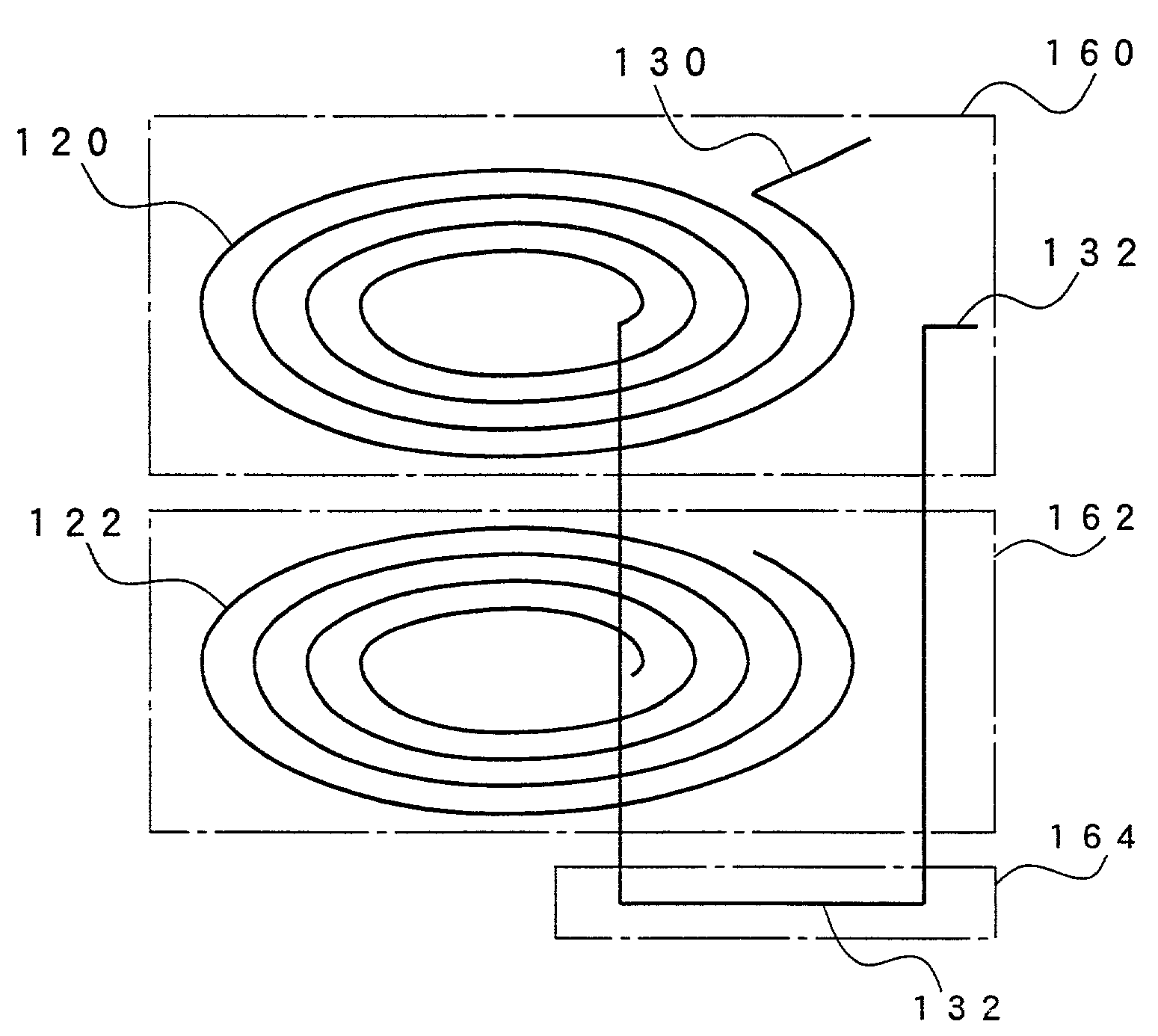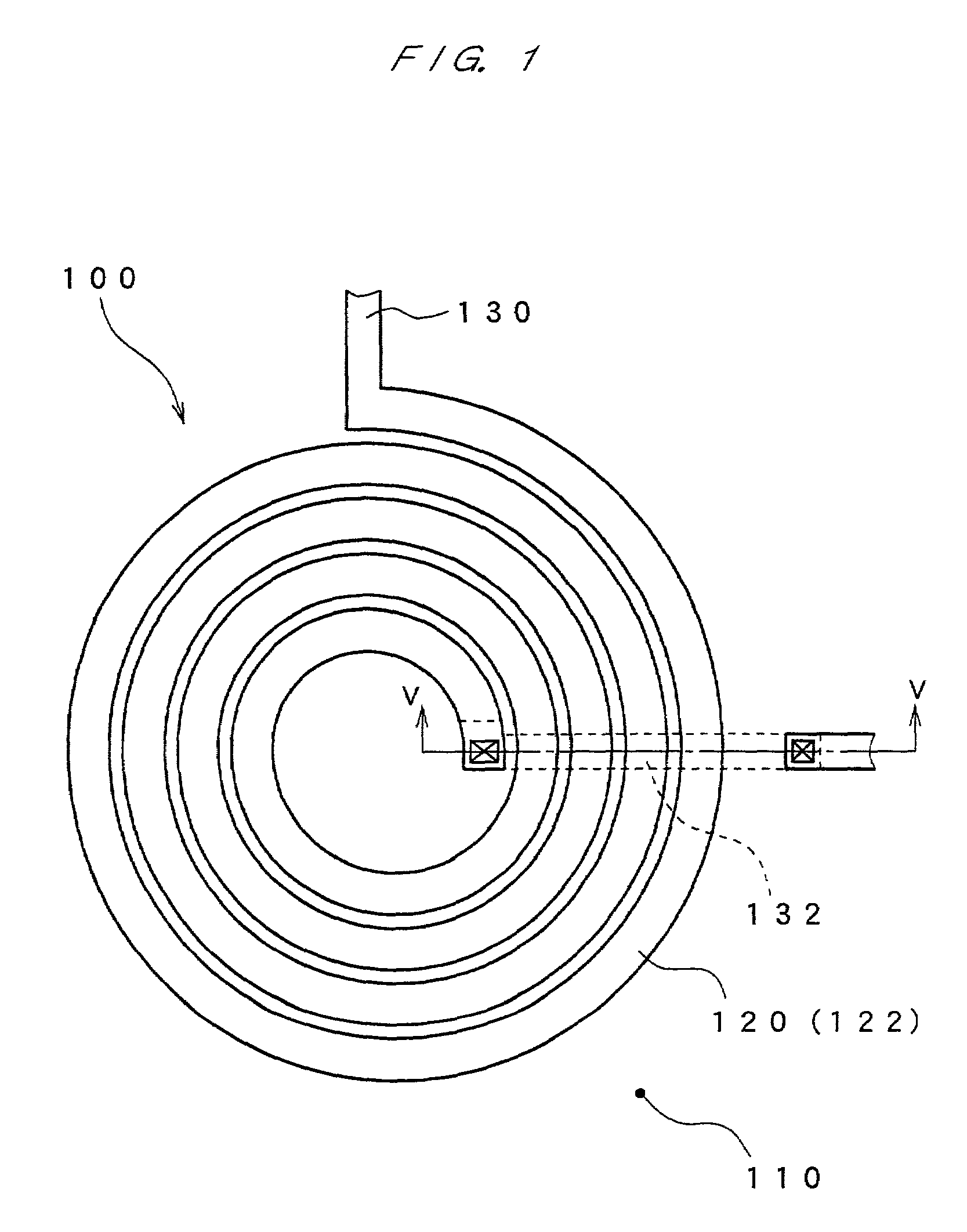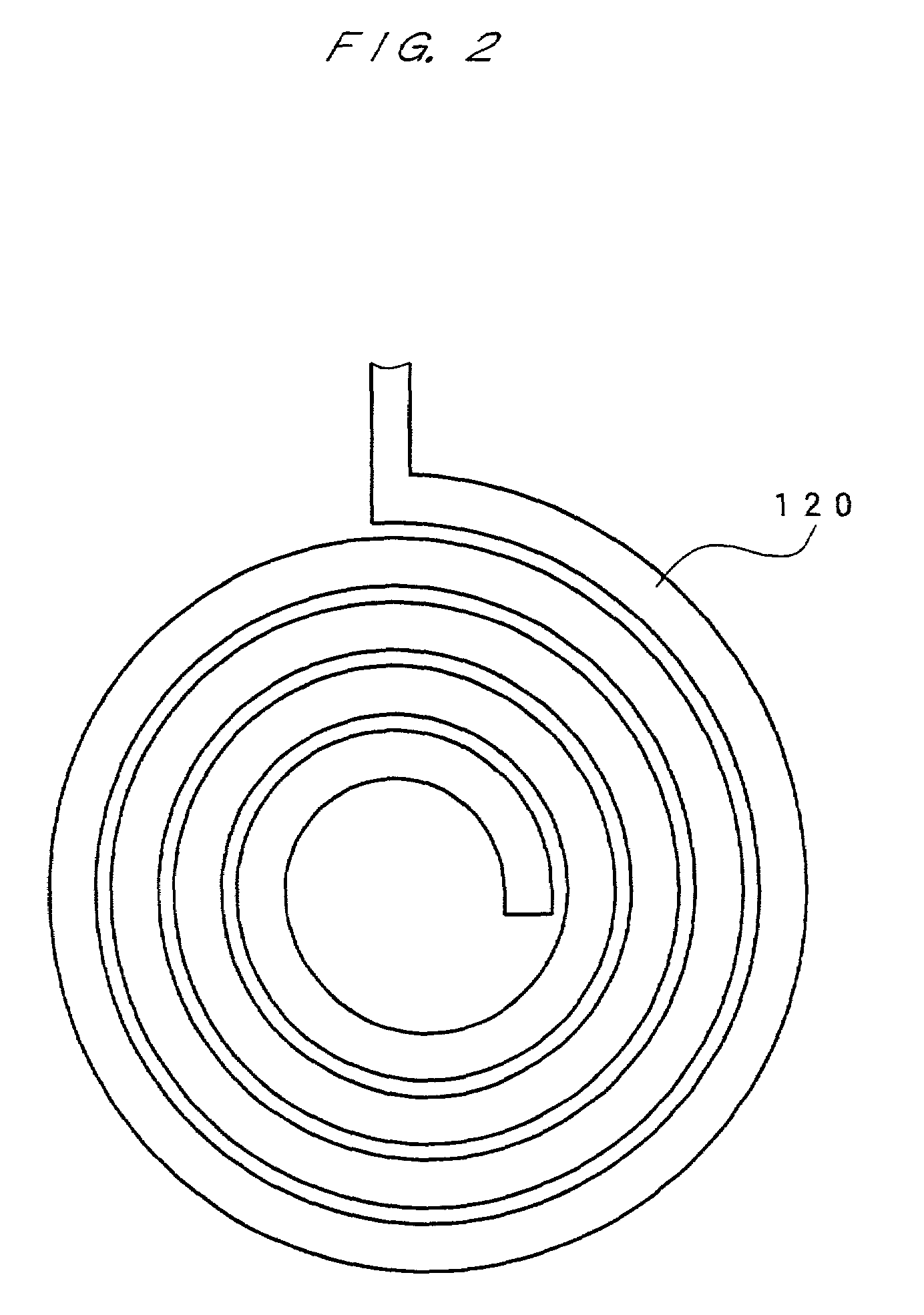Inductor element
a technology of inductor elements and elements, applied in the direction of impedence networks, inductances, multiple-port networks, etc., can solve the problems of ineffective functioning of inductor elements, difficult to form high-frequency circuits, and interrupt the flow of effective magnetic flux generated by inductor conductors, so as to reduce manufacturing costs, simplify manufacturing processes, and reduce manufacturing costs
- Summary
- Abstract
- Description
- Claims
- Application Information
AI Technical Summary
Benefits of technology
Problems solved by technology
Method used
Image
Examples
first embodiment
[0028]FIG. 1 is a schematic diagram showing a planar structure of an inductor element according to the first embodiment. In addition, FIG. 2 is a drawing showing an upper layer of conductor included in the inductor element shown in FIG. 1. FIG. 3 is a drawing showing a shape of a lower layer of conductor included in the inductor element shown in FIG. 1.
[0029]An inductor element 100 according to this embodiment has two conductors 120 and 122 that have spiral shapes and are formed on the surface of a semiconductor substrate 110. These two conductors 120 and 122 have substantially the same shape. When viewed from the front side of the semiconductor substrate 110, they are formed so that the conductor 120, which becomes an upper layer, and another conductor 122, which becomes a lower layer, are formed by being superimposed one on the other substantially exactly. Each of the conductors 120 and 122 is formed of, for examples, a thin film of metal (metal layer), or semiconductor material s...
second embodiment
[0036]FIG. 6 is a diagram showing the structure of an inductor element 100A in a second embodiment. This is different in that a predetermined impedance element 200 is added to the inductor element 100 in the first embodiment shown in FIG. 4.
[0037]Namely, in the inductor element 100 in the first embodiment described above, with paying attention to the other conductor 122 located so as to substantially superimpose the one conductor 120 serving as an inductor conductor, both ends are free (open state). In this embodiment, the characteristics of the whole inductor element 100A can be improved or adjusted by terminating the inner circumferential end of the conductor 122 through the impedance element 200.
[0038]For example, when electric current flows into the one conductor 120 of the inductor element 00A, induced current flows to the other conductor 122. However, it becomes possible to prevent unnecessary reflection in this inner circumferential end by terminating the inner circumferentia...
PUM
| Property | Measurement | Unit |
|---|---|---|
| shape | aaaaa | aaaaa |
| shapes | aaaaa | aaaaa |
| circular shapes | aaaaa | aaaaa |
Abstract
Description
Claims
Application Information
 Login to View More
Login to View More - R&D
- Intellectual Property
- Life Sciences
- Materials
- Tech Scout
- Unparalleled Data Quality
- Higher Quality Content
- 60% Fewer Hallucinations
Browse by: Latest US Patents, China's latest patents, Technical Efficacy Thesaurus, Application Domain, Technology Topic, Popular Technical Reports.
© 2025 PatSnap. All rights reserved.Legal|Privacy policy|Modern Slavery Act Transparency Statement|Sitemap|About US| Contact US: help@patsnap.com



